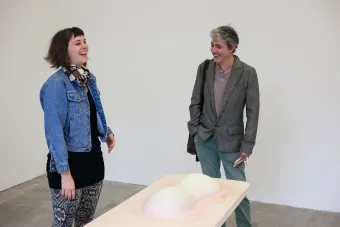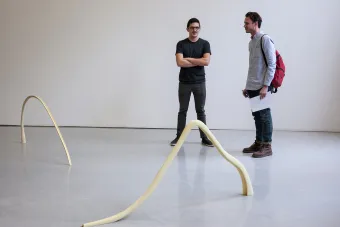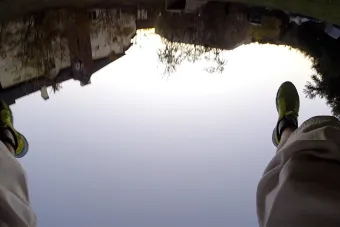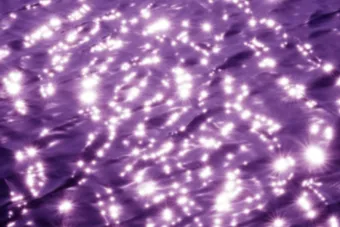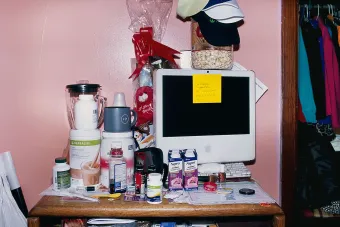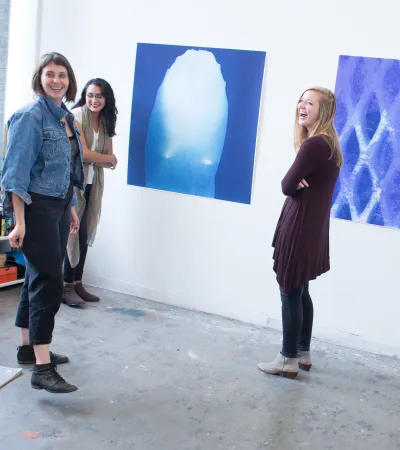
MFA in Studio Art
The Studio Art graduate program welcomes all lines of inquiry: spatial, lens-based, two-dimensional, interactive, sound, and performative. We are a multidisciplinary program using as an organizational structure the expansive territories of Painting & Drawing, Photography & Media, Print, Sculpture & Extended Media, and Transmedia.
MFA students work closely with dedicated and professionally active faculty to fine-tune existing skill sets and develop new approaches, both conceptual and technical. We have built a supportive yet stimulating community in which students are immersed in an environment of discovery, challenged to consider the depth of an individual discipline, encouraged to explore new ones, meanwhile finding overlaps in new and familiar ways.
Used to its full advantage, our curriculum is distinctive to each student’s interests and particular to the assets and research strengths of the department as well as to The University of Texas at Austin. The curriculum allows for many course options giving MFA candidates progressively more studio time as their investigations become more demanding and distinct. Students develop their artist’s voice, in both the ability to make images and to build intellectually upon the discourse surrounding one another’s practices. Students formulate an ongoing and dynamic dialogue with faculty, peers and visiting specialists allowing for a richly informed approach and experience in art making.
Degree
Coursework Requirements
| Hours | Coursework |
|---|---|
| 4 | 1st Year Seminar (ART 484F) |
| 16 | Group Critique (ART 480) |
| 16–19 | Committee Study (ART 481, 581, 681, 781) |
| 4 | Seminar (ART 482) or seminar substitution approved by Graduate Advisor |
| 4 | Professional Practice (ART 498P) |
| 3 | Master’s Portfolio Report (ART 398R) |
| 4 | Master’s Exhibition Seminar (ART 498S) |
| 3–6 | Elective courses approved by the Graduate Advisor |
| 3 | Art History |
| 60 total |
Course Descriptions
ART 480: Group Critique in Studio Art
Group critiques of student artwork organized under the leadership of the instructor in additional to regular individual studio visits between the instructor and each student. 3 lecture hours a week for 1 semester. Additional laboratory hours are also required. Students must take this course each of the four semesters for a total of 16 semester hours of credit. May be repeated for credit. Prerequisite: Graduate standing in studio art and consent of the Graduate Advisor.
ART 182, 281,381, 481, 581, 681,781, 881: Graduate Committee Study in Studio Art
Studio hours to be arranged. Work to be reviewed at end of semester by graduate committee with grade submitted by the committee member assigned to oversee that semester. May be repeated for credit. Prerequisite: Graduate standing in studio art and consent of instructor and the Graduate Advisor.
ART 482: Seminar in Studio Art
Addresses topics and issues in contemporary art. Uses lectures, readings, guest presentations, discussions, and writings to articulate and discuss the production and reception of culture. 3 lecture hours a week for 1semester. May be repeated for credit. Prerequisite: Graduate standing in studio art and consent of the Graduate Advisor.
ART 484F: Master of Fine Arts First Year Seminar
Restricted to first-semester graduate students in studio art. Designed as an introduction to the extensive research assets of the university. In addition, the class develops critical assessment skills and develops effective and consistent habits for working in the studio. 4 lecture hours a week for 1 semester. Prerequisite: Graduate standing in studio art and consent of the Graduate Advisor.
ART 498P: Professional Practice for Fine Artists
Restricted to second-year studio art graduate students. Designed to help fine art students through lectures, guest specialists, field trips and readings to understand and prepare effective strategies for entering various aspects of the art world. 4 lecture hours a week for 1 semester. Prerequisite: Graduate standing in studio art, and consent of instructor and the Graduate Advisor.
ART 398R: Master’s Portfolio Report
The production of a written interpretation of the artwork created in the graduate program, addressing concepts of and influences on the work, and including a digital portfolio of major works. The equivalent of 3 lecture hours a week for 1 semester. Offered on a credit/no credit basis only. Prerequisite: Graduate standing in studio art, passage of the required 45-hour review, concurrent enrollment in Studio Art 498S, and consent of the Graduate Advisor.
ART 498S: Master’s Exhibition Seminar
The class is a vehicle for the presentation of a professional exhibition in which significant work from each of the students is displayed. The instructor organizes the exhibition with all students collaborating in its execution. The students’ final review takes place during the exhibition and is individually conducted by faculty committee. At a later date during the exhibition, students may publicly discuss and present their work open to the public. The equivalent of 4 lecture hours a week for 1 semester. Offered on a credit/no credit basis only. Prerequisite: Graduate standing in studio art, passage of the 30-hour MFA oral examination, concurrent enrollment in Studio Art 398R, and consent of the Graduate Advisor.
Example Program Plan
| Year | Fall Coursework | Spring Coursework |
|---|---|---|
| First Year |
TOTAL: 15 CREDITS |
TOTAL: 15 CREDITS |
| Second Year |
TOTAL: 15 CREDITS |
TOTAL: 15 CREDITS |
People & Work
Visiting Artists & Critics
Each year, a number of artists, critics, and others are invited for visits through a series of speaker programs. In addition to public talks, many provide studio visits with MFA students.

Thesis Exhibitions
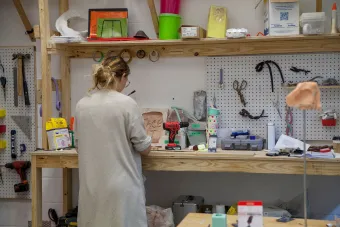
Work Spaces
All students in the MFA program are provided private studio space in the Art Building and have access to a variety of analogue and digital labs and facilities.
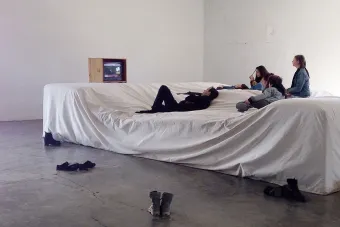
Residencies & Travel Support
The MFA program offers competitive attendance fellowships to residencies such as Skowhegan, SOMA Summer (Mexico City), and Ox-Bow, as well as limited grants and travel awards for other professional development opportunities.
Funding
Tuition Waivers
The faculty’s goal is to award Tuition Waivers to all out-of-state and international students that forgive the non-resident portion of tuition. Therefore, it is very likely that each admitted student will only be charged resident (in-state) tuition for both years. Accepted non-resident applicants, as well as continuing non-resident students, are automatically considered for this waiver.
Fellowships
All incoming students are automatically considered for fellowship support. No additional application or supporting material is required. Fellowship decisions for continuing students are made each spring after a faculty review of student artwork.
Teaching Assistantships
Teaching Assistants (TAs) provide support to faculty members in classrooms and/or monitor open periods in labs. Some 10- and 20-hour assistantships are available to both incoming and continuing students, and all students are considered for appointment as TAs. 20-hour appointments pay the majority of tuition, a stipend, and high-quality health insurance. Appointments are based on institutional need and available funding, and are made on a semesterly basis (rather than annual).


